Is it a rock formation? A person who studies the earth? Something horticultural? What…
If you picked something horticultural, you are correct! Simply put, geophytes are perennial plants with underground storage systems. Geophyte means “earth plant,” and the term was first used over a hundred years ago to describe plant species that produce modified, underground structures to store nutrients and water, and they are specifically adapted to survive periods of harsh environmental conditions. Things like cold, heat, drought, fire, and grazing animals. These underground storage containers are active, and when conditions are right, they grow, bloom, and reproduce.
The term “bulb” is often used to refer to tubers, corms, rhizomes, and true bulbs.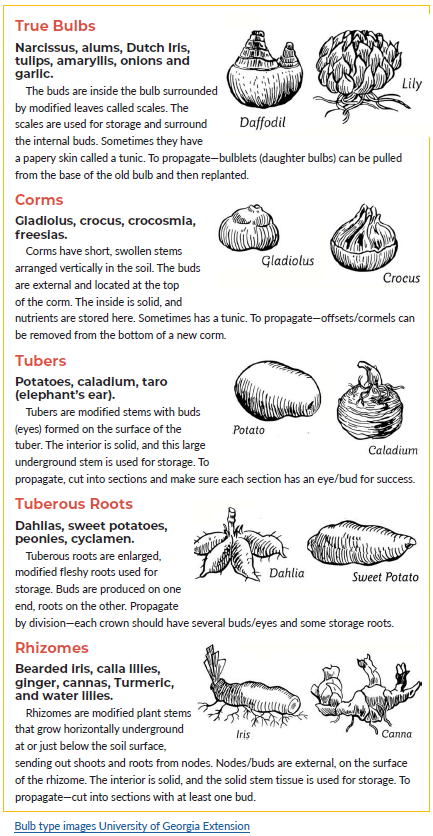
Bulbs are available in a wide variety of sizes, colors and forms.
They provide us with flowers, herbs and vegetables.
They are easy to grow.
Geophytes have a built-in emergency readiness kit in their underground storage system; some are great for eating, while others are attractive in your ornamental garden. Many gardeners use the term “bulb” to describe these wonderful plants that sprout green leaves and colorful blossoms seemingly out of nowhere. Geophytes include bulbs (true bulbs), corms, tubers, tuberous roots, and rhizomes. Each type has its own underground structures, cultivation and propagation needs. Let's look at some of the common types of geophytes found in Humboldt and Del Norte Counties, as well as your local grocery store.
In our area, October, November, and early December are the months to plant Spring flowering bulbs, rhizomes, tuberous roots, and corms. These include daffodils, anemones, hyacinths, bearded irises, tulips, lilies, native Pacific Coast irises, alums, and crocus. Sources for bulbs include local nurseries, seed/bulb catalogs, and fellow gardeners who use this time to divide and propagate their plants.
CULTURAL NEEDS
- SOIL: They need well-drained soil. Drainage is critical to keep them from rotting; consider planting in raised beds on a slope or in containers. They prefer loamy or slightly sandy soil, which provides drainage and nutrients.
- SUN: Consider the needs of the specific plant. Some prefer full sun (5 to 6 hours per day), and others prefer partial shade. Select the location accordingly.
- SELECTION: Look for bulbs that are firm to the touch, not soft or spongy. They shouldn't have any signs of disease, mold, or severe damage. They should show little or no root growth or sprouting. Lilies are the exception and may have fleshy roots attached.
- PLANTING: Plant in clusters for visual impact and consider bloom time to enjoy a more extended season of blooms. You will want to plant with the growth points “up” and the root scars “down.” Planting depths vary, and a general rule for true bulbs, corms, and tubers is to plant them three times as deep as the bulb is wide. Plant rhizomes and tuberous roots with growth points covered with three or four inches of soil. See the Blooming Times and Soil Depths Chart below.
Some gardeners find it helpful to use markers where they have planted so they can monitor a particular plant's successes and challenges. A quick internet search will give you ideas for markers. I like to use photos of the area planted and golf tees.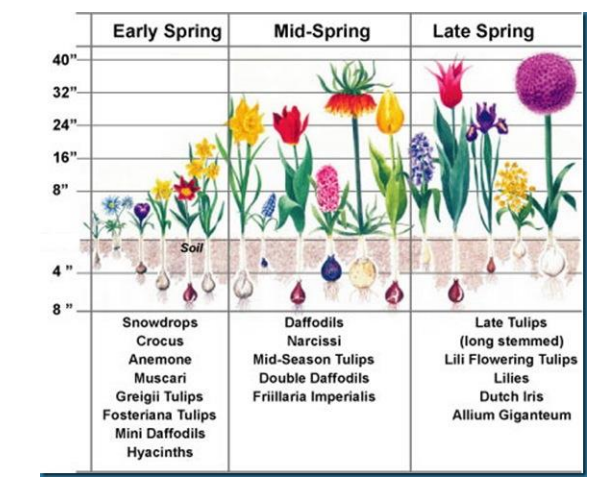
- WATER: Water the newly planted bulbs and irrigate regularly until the fall/winter rains begin. Water them while they are actively growing and until the foliage dies back. Be sure to water deeply enough to reach the root zone.
- FERTILIZER: Healthy mature bulbs store all the nutrients they need in their underground storage systems. The best time to fertilize is after blooming. According to Bulbs and More from the University of Illinois, five tablespoons of 10-10-10 soluble fertilizer or a similar “bulb” fertilizer plus two cups of bonemeal can be used for an area of 10 square feet in size.
- REPEAT BLOOM: Isn't that why we plant them? By the end of the season, the nutrient stores will have been used up. To replenish and build up the reserves for next year, it is essential to leave the bulb in the ground and allow the remaining leaves to gather as much sunlight as possible – don't cut those leaves and allow them to die back naturally.
- PESTS: Snails will eat the leaves and blossoms; handpick or trap them. See How to Manage Snails and Slugs in Gardens and Landscapes from UC IPM. Gophers, moles, voles, mice, and squirrels find bulbs delicious (although they avoid daffodil bulbs because they taste bitter and are mildly poisonous). You can protect your bulbs by planting them in cages made from ¼ - ½ inch wire. Containers and raised beds with wire mesh lining can also help.
Looking to extend your flowering season? Summer and Fall blooming bulbs, such as gladiolas, dahlias, begonias, cannas, and calla lilies, are usually planted in the Spring after the threat of frost, as they are not winter hardy. Sometimes, these bulbs are called tender bulbs. More about these plants will appear in a future issue of The Coastal Gardener.
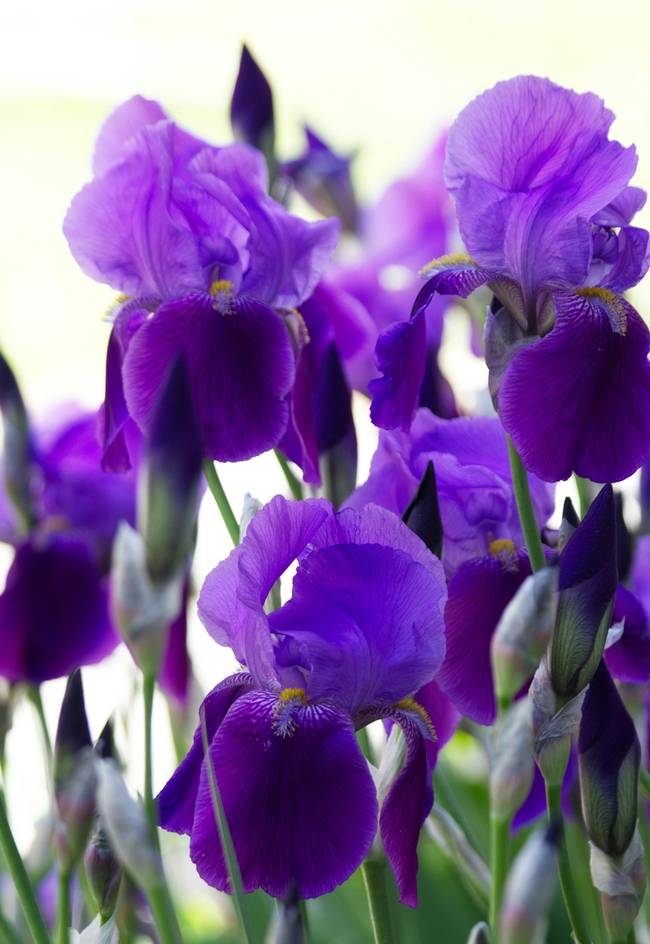
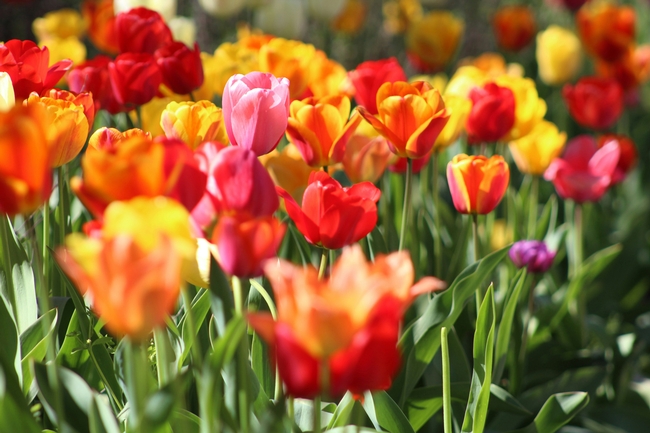
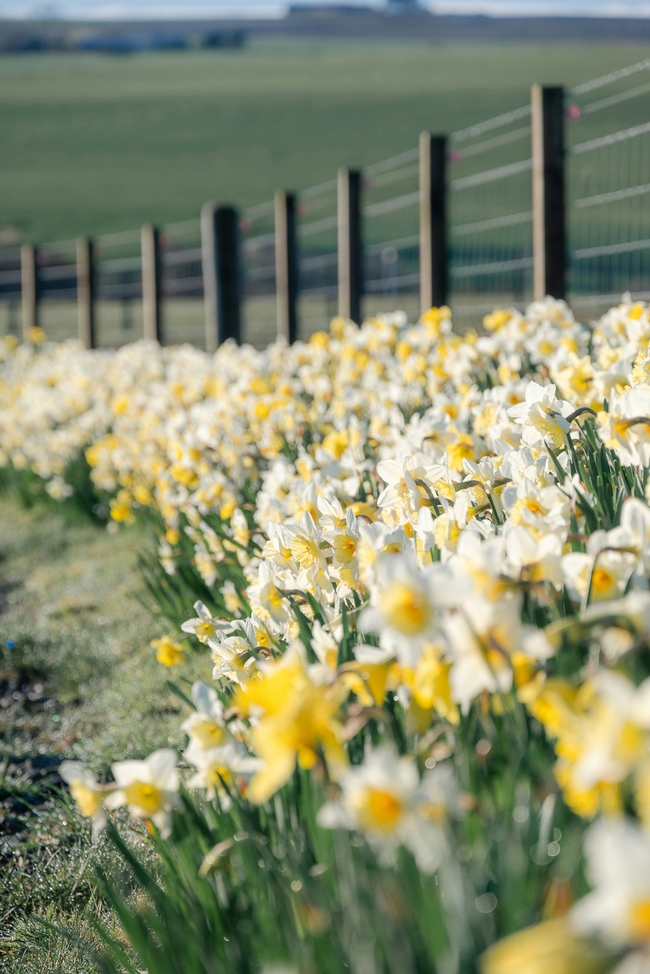
Resources:
For detailed information about bulbs and geophytes, visit https://propg.ifas.ufl.edu/#07-geophytes
Questions and Answers about Growing Bulbs https://extension.illinois.edu/flowers/bulbs
Spring Blooming Bulbs – Planting, Growing and Dividing, by Becca Harper, https://ucanr.edu/sites/mglaketahoe/files/290739.pdf
Summer and Fall Blooming Bulbs, Penn State Extension, https://extension.psu.edu/summer-and-fall-blooming-bulbs
